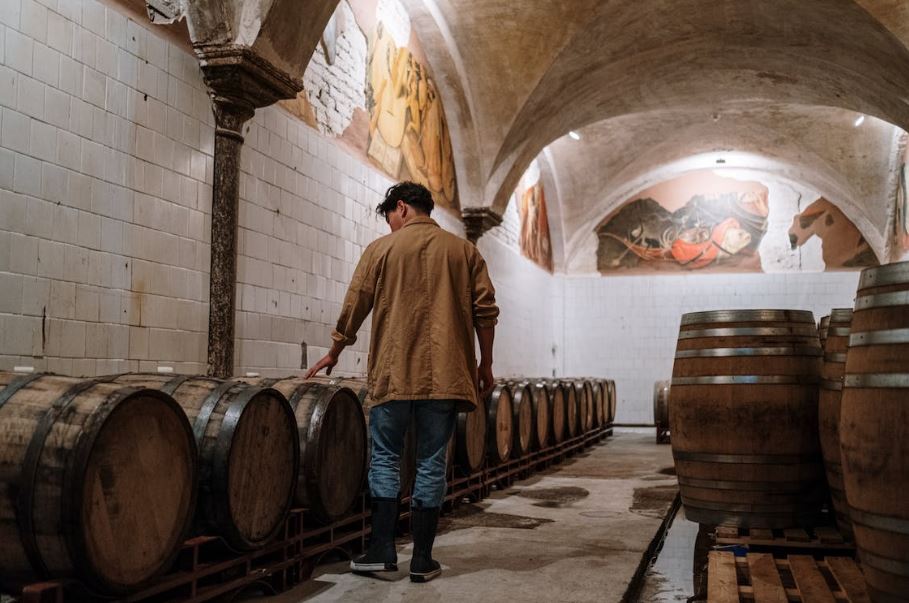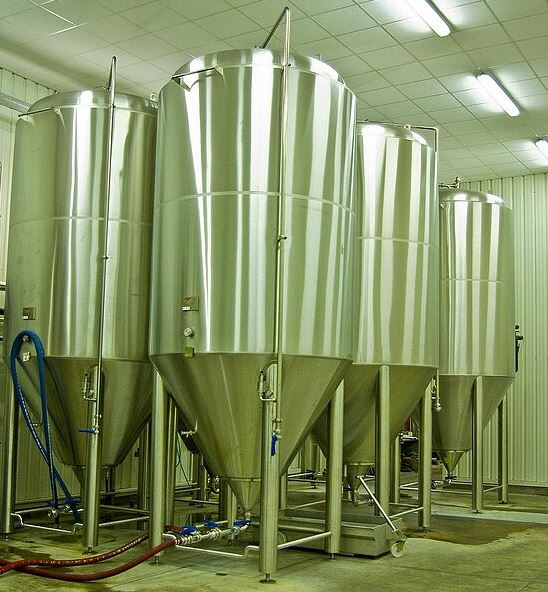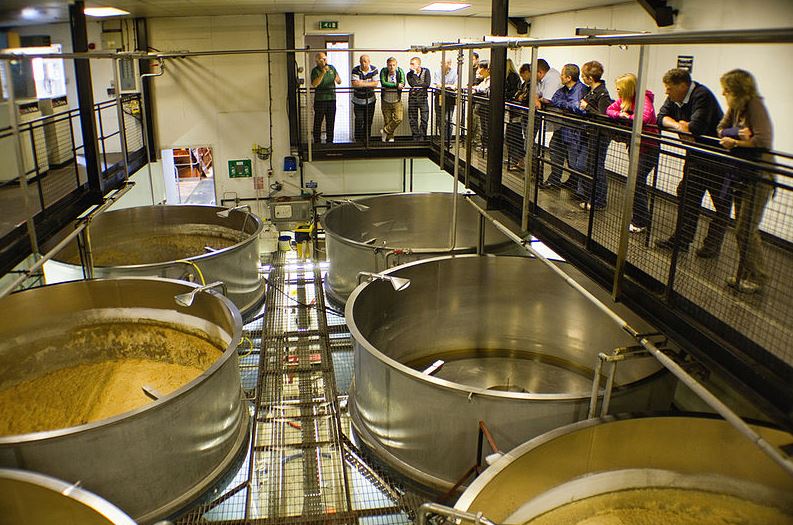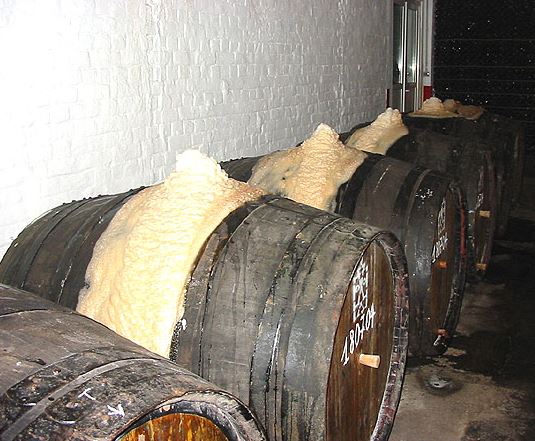Introduction
Beer gets its alcohol content and carbonation from fermentation, a process in which yeast transforms glucose in the wort into ethyl alcohol and carbon dioxide gas (CO2). When yeast is introduced to the cooled wort in a fermenting vessel, the fermentation process begins.
Let us tackle more about the process of beer fermentation, this article may answer the questions in your mind.
The Process
A key step in the brewing process is beer fermentation, in which yeast transforms the carbohydrates in wort (unfermented beer) into alcohol and carbon dioxide gas. In a container, such as a fermenter, the fermentation process occurs at a regulated temperature.
Here is a quick explanation of the steps involved in the fermentation of beer:
- After the wort has boiled, it is cooled to a temperature where the yeast can survive, usually between 60- and 70-degrees Fahrenheit (15 and 21 degrees Celsius). After that, the wort is mixed with yeast to begin the fermentation process.
- The fermentable carbohydrates in the wort, such as maltose and glucose, are consumed by the yeast, which then transforms them into alcohol (ethanol) and carbon dioxide gas (CO2).
- Controlling the temperature is essential to getting the maximum performance out of the yeast throughout the fermentation process. The type of yeast being utilized and the type of beer being made determine the appropriate temperature range. Lager yeast likes a colder temperature range of 45-55°F (7-13°C) whereas ale yeast generally prefers a warmer temperature range of 65-75°F (18-24°C).
- Krausen formation. As the yeast breaks down the sugar, it creates a substantial cap of froth known as krausen on top of the fermenting beer. This indicates that the yeast is causing the beer to ferment actively.
- As time passes, the fermentation process slows as the yeast consumes the majority of the fermentable carbohydrates. To gauge when the fermentation is finished, the brewer will measure the specific gravity (SG) of the beer. Before the beer is suitable for packing, the final gravity (FG) value needs to remain constant for a few days.
- Beer is often kept in the fermenter for a few more days after fermentation is finished in order to condition and develop. During this period, the tastes and aromas of the beer continue to develop while any leftover yeast and other debris drop to the bottom of the fermenter.
- Beer packaging is the last stage in the fermentation process for beer. The beer can then be carbonated naturally or artificially by adding more yeast or sugar after it has been kegged, bottled, or canned. Beer can be consumed once it has been carbonated.
What takes place while beer ferments?
Fermentation of beer explained simply:
While the fermentation vessel is still feeling empty, beer yeast is introduced to begin the fermentation process. After the fermentation process is complete, the liquid is known as “Green Beer” because the yeast has transformed the sugary wort into true beer by creating alcohol, a variety of flavors, and carbon dioxide (which is utilized later in the brewing process to carbonate the beer).
How long should my beer ferment?
What period of time is ideal for fermenting beer? is a common question among new brewers. The reality is that we have no control over how long something ferments. Once you’ve pitched your yeast, the rest is up to them.
However, there are several factors that we may alter to speed up or slow down this process, such as fermentation temperature. This depends depend on the yeast variety you’re using and the characteristics you want your beer to have.
Temperature control for fermentation
The quality of the final product and the length of the fermentation process may both be significantly altered by temperature management, which is a crucial component of fermentation.
Each type of yeast has a temperature range where it performs best. Different yeasts’ capacity for fermentation might vary depending on the temperature within that range. Typically, yeast will operate more quickly at warmer temperatures and less quickly at cooler ones.
The basic rule is that you are more likely to acquire off-flavors and undesirable characteristics in the beer the hotter the fermentation, especially outside of the yeast’s indicated temperature range. Cooler temperatures, especially those outside of the yeast’s indicated temperature range, might occasionally cause fermentation to halt, take longer to complete, or present other difficulties. The exceptions are yeast varieties like Kveik and certain beer types like Saisons and wheat beers.
The fundamental guideline for fermentation temperatures
Aim for the lower-middle range of the fermentation temperature for the yeast. It is recommended to strive for 19–20°C, for instance, if the temperature range is 18–22°C.
As previously indicated, this guideline might vary for some styles, such as Saisons and wheat beers. These frequently call for more difficult fermentation processes.
Kveik has had a recent brewing industry growth. This “super yeast” is perfect for brewing in warmer locations since it can readily ferment a beer at temperatures above 30°C without drawing any of the normal off flavors that one would get with other strains.
When does the fermentation of the beer end?
Using the airlock on the fermenter to determine progress is a common error made by novice brewers. An airlock is exactly what it sounds like; it is a mechanism that prevents anything from entering the beer as it ferments and also allows the trapped CO2 to escape
All this is telling us is that CO2 is escaping from the fermenter, even if many of us are mesmerized by the airlock producing that ‘gloop’ sound every few seconds. This CO2 may be leaking from the fermenter if the seal is imperfect, in which case the airlock won’t continue to bubble.
The only reliable technique to determine when your beer has finished fermenting is to use a hydrometer or refractometer. You can use these tools to measure the sugar content of the wort or beer.
The typical recommendation is to have a steady specific gravity (SG) value over 2-3 days to determine when your beer is finished and suitable for packaging. This is done to make sure the fermentation process is finished.
When my beer has finished fermenting, what do I do?
After fermentation, it is advised to let the beer a few days to rest. As the yeast settles to the bottom of the fermenter, the beer will be able to clarify and settle out. We would suggest in favor of this if you were able to slightly lower the temperature because it can help the beer clarify.
After fermentation is finished, you have the option of packaging the product right away, looking to age it longer, adding additional ingredients like fruit or oak, or leaving it alone in the case of some lagers. Everything depends on the type of beer you have produced.
It has long been believed that following primary fermentation, you should “rack” the beer into a secondary fermenter to remove it off the yeast cake and improve its condition for packing. Nowadays, the benefits of secondary fermentation are rarely greater than the dangers of possible oxidation and contamination. In general, secondary fermentation is only advised when one will really take place, i.e., carbonation in kegs or bottles.
What happens when beer ferments too long? Is it possible to over ferment beer?
No, in general; beer cannot be over-fermented. For want of a better phrase, beer yeast can only consume specific kinds of wort sugars. The yeast spends the remainder of its time relaxing in the bottom of the fermenter as it waits for the next stage of the brewing process to begin. However, it is important to keep an eye on your brew since beer with odd flavors can result from yeast that has been allowed to sit for too long. While funk and crazy flavors are not always bad, in this instance they are.
Does the kind of yeast have an impact on fermentation?
When fermenting in beer, several strains of beer yeast behave differently. The temperature at which the wort must ferment will vary depending on the yeast strain a brewer chooses. The flavor of your final beer may also depend on the type of yeast you use. While certain yeasts provide a yeasty/bready flavor, others produce a crisper, cleaner flavor. Choosing the right yeast strain for the beer type you are intending to brew is crucial.
Conclusion
During the chemical process of beer fermentation, yeast transforms carbohydrates into alcohol and carbon dioxide, turning wort into beer. Depending on the style and kind of beer, the procedure might take days or even months. Brewers may produce a variety of beer types by controlling the fermentation process using numerous variables, including temperature and yeast strain. For making or drinking beer, it is essential to comprehend the fermentation process.




